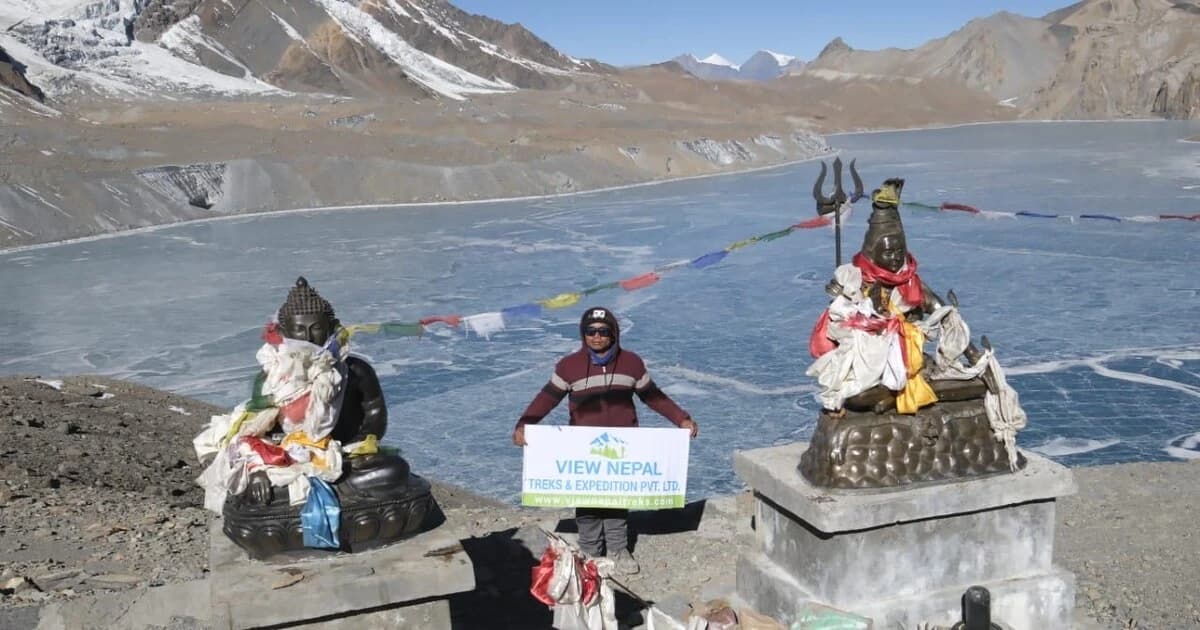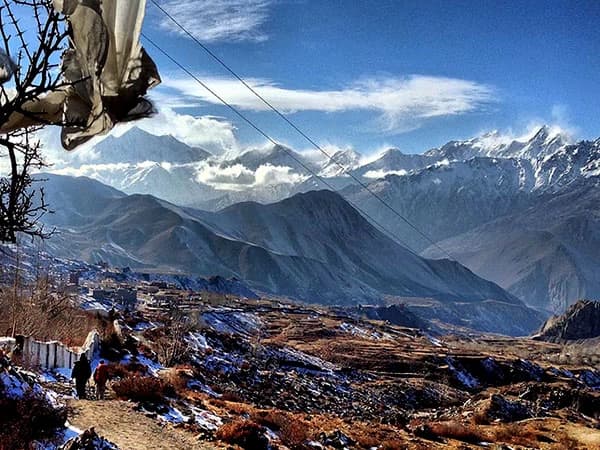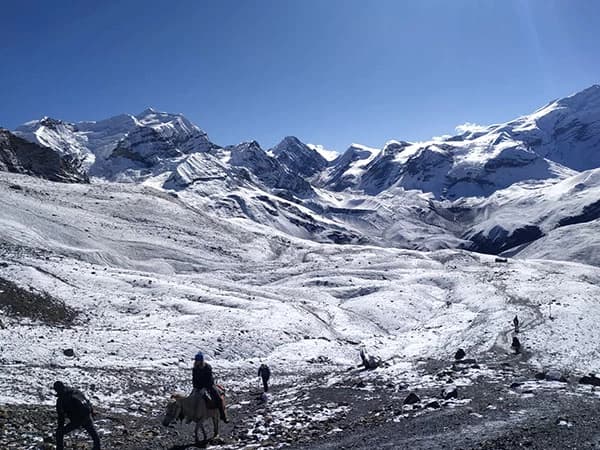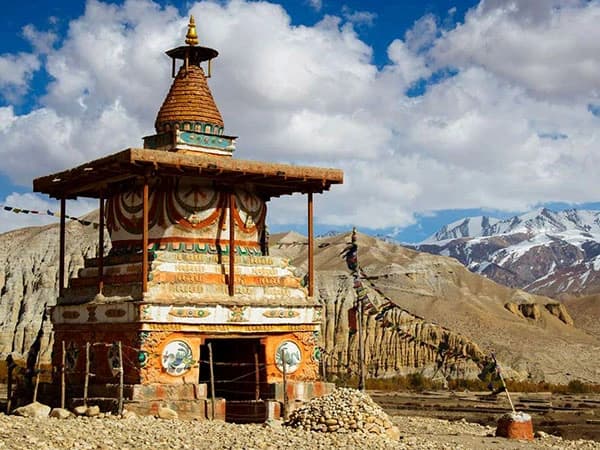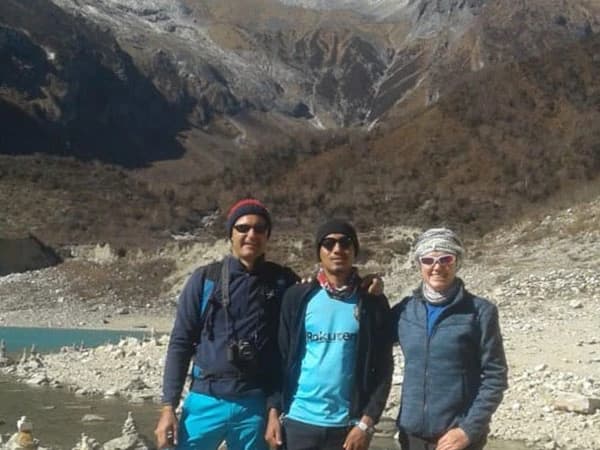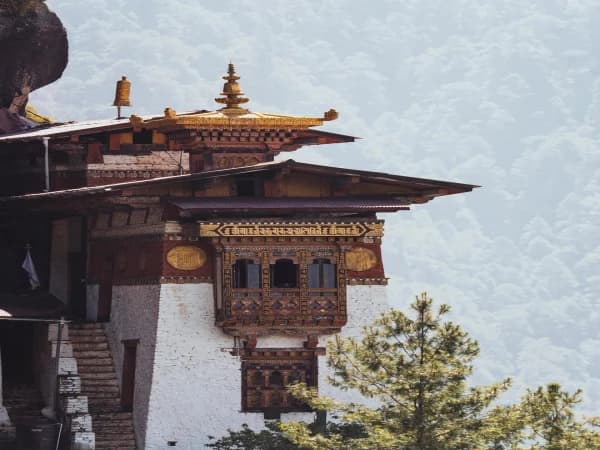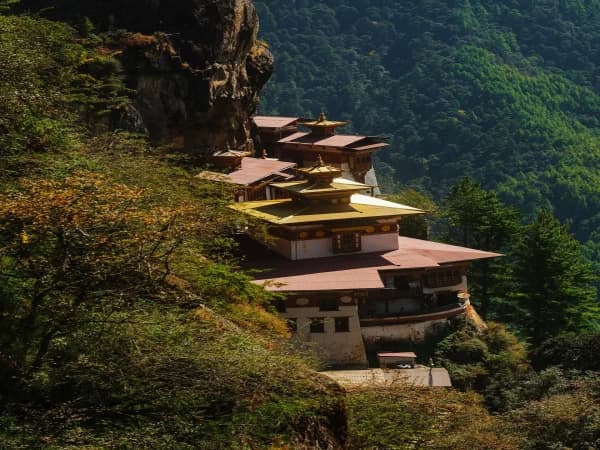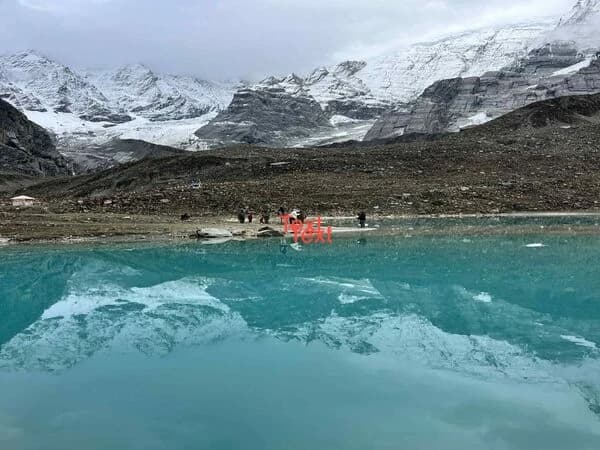Trekking in the Annapurna region can be done in any season. It's open for all the seasons and the best time to explore the Annapurna region is the spring and autumn season that's March to May and September to December. This season will be perfect for those who are seeking to trek in the Annapurna region where weather and climate are favorable during the Spring and Autumn. Trekking in the ideal season offers the best view with a clear sky and majestic snow-capped mountain vistas. Here we will discuss the different seasons and climate conditions in the Annapurna Region.
Best Time to Trek the Annapurna: A Complete Guide
About Annapurna Region
Nepal is the hub for trekking destinations. There are many popular trekking destinations in Nepal, including the Annapurna region. The Annapurna Region, located in the Himalayas in the north-central part of Nepal, is a paradise for trekkers. The world's 10th highest mountain, Annapurna I, 8,091 meters (26,545 ft) above sea level, is the crown jewel. The region offers a diverse range of trekking experiences, including the classic Annapurna Circuit Trek and the Annapurna Base Camp Trek.
The Annapurna Conservation Area is Nepal's largest protected natural adventure wonderland, preserving its rich biodiversity and cultural heritage. It is home to Gurung and Magar communities and people's insight into traditional mountain life.
If you are seeking adventure or cultural immersion, the Annapurna Region offers an unforgettable Himalayan experience.
Which season is best for the Annapurna Trek?
Trekking in the Annapurna region is open for all seasons, different seasons offer different views, and challenges may occur during low-season trekking. The best seasons to visit the Annapurna circuit are autumn and spring when the weather is clear and climate conditions are perfect in comparison to other seasons.
The Annapurna region has unpredictable weather. While trekking in the summer and monsoon seasons might be challenging, they also offer a more lush green landscape with the blooming wildflowers and Rhododendron flower highlights to the Greenhill with its red flowers which look like cherries on the hilltop. However, trekking in the winter season will be much more difficult due to heavy snowfall, and the trails will become more slippery. Despite its challenges, each season presents a different landscape that makes the Annapurna Region the best destination for trekking all year round.
Annapurna region trekking in the spring season (March to May)
The spring season is one of the perfect and peak times for trekking in the Annapurna region. It feels like stepping into a vibrant painting. The weather is moderate, and it is not too hot or cold, with clear blue skies unveiling stunning majestic mountain views.
Imagine trekking through hillsides covered in blooming Rhododendron forests, a riot of red, pink, and white. You'll see iconic peaks like Annapurna and Dhaulagiri along the trekking trail with fresh, green landscapes, cascading waterfalls, and river streams from melting glaciers. Treks like the Annapurna Circuit Trek and Annapurna Base Camp are especially beautiful this time of year.
Highlights of the Annapurna Region in the Spring Season
- Imagine walking through forests where the trees are covered in bright red, pink, and white Rhododendron flowers. It's like walking through a giant garden, and the hills look like an amazing painting landscape.
- Besides the Rhododendron flowers, you'll see many other small, colorful flowers growing on the ground. It's like a rainbow of flowers all around the trekking trail in the lower region.
- The sky is super clear in spring, so you can see the massive, gigantic snowy Annapurna Range including Dhaulagiri, Lamjung, and other peaks above 6000 meters.
- After the cold snowy winter, all the flora starts blooming again. The fields and forests become bright green, making everything look fresh.
- The weather is not too hot and not too cold, so walking on the trails is comfortable in a moderate climate. You can walk for hours without feeling too tired from the heat and enjoy the alluring view.
- The local Gurung and Magar communities, people who live in the villages, are happy to see visitors. They are busy with their farms, and you can see their culture and daily life, cattle grazing like Yaks, sheep, and Himalayan goats.
- With all the flowers, mountains, and green fields, you can take amazing pictures. Every view looks like a postcard.
Challenging factors during Spring Season in the Annapurna Region
- Even with its beauty, spring in the Annapurna region, you might face a few challenges during trekking. Some challenges can be minimized before you board on the trek:
- Spring is the peak season, when there are more domestic and international tourists, making the trekking trails more crowded.
- While generally pleasant, spring can still bring unpredictable weather, including occasional rain showers or sudden temperature drops, especially at higher elevations.
- Due to the high number of trekkers, securing accommodation in tea houses, especially in popular areas, can be difficult without pre-booking.
Temperature in the Annapurna Region during the Spring Season
The temperature in the Annapurna region during spring varies in terms of altitude from lower altitude to higher elevation.
Lower Altitude (from 3,900ft to 8,200ft)
In the lower areas, you can expect comfortable temperatures, generally ranging from 15°C to 20°C (59-68°F)
Daytime temperatures can be quite pleasant, making trekking enjoyable.
Higher Altitude (from 8,200ft to 18,550ft)
As you ascend, temperatures drop significantly, at higher altitudes such as Annapurna Base Camp or Thorong La Pass, nighttime temperatures can fall below freezing.
Even during the day, high-altitude areas can be cold, ranging from near freezing to minus degrees Celsius.
Annapurna region trekking in the Autumn season (Sept to Nov)
Autumn is the other best season for trekking in the Annapurna region, Imagine trekking in the Annapurna region during autumn (September to November). It's like stepping into a postcard. As the monsoon is over, the skies are incredibly clear, with an open blue sky, revealing stunning mountain views, including Annapurna and Dhaulagiri, which are the 10th and 7th highest mountains in the world respectively.
You'll experience clear, crisp air and majestic visibility, perfect for photography. Autumn is a perfect time, the incredible scenery and stable weather make it a truly unforgettable Himalayan adventure.
Highlights of the Annapurna Region in the Autumn Season
- After the rainy season, all the dust is blown away. You can see the Gigantic mountains like Annapurna and other peaks above 6000m so clearly, it's like they're right in front of you. No clouds blocking them.
- The trails are dry and easy to walk on. You won't be slipping in the mud, which makes hiking much more fun.
- The flowers bloom super green after the rain, and the rice and buckwheat fields turn a beautiful gold color. It's like a painting with lots of different shades.
- It's not too hot or too cold during the day, so walking feels really nice. You can enjoy the views without feeling too tired from the weather.
- You'll see the mountain range from Annapurna to Manaslu Range and furthermore, due to the clear air, you can see really far.
- You might see local festivals and celebrations because it is the festive season, where the national festival is celebrated.
Challenging Factors during Autumn Season in the Annapurna Region
- Autumn is the peak season, meaning a surge in trekkers. This leads to packed trails, especially on popular routes like the Annapurna Circuit and Annapurna Base Camp. Teahouses can fill up quickly, making it difficult to find accommodation without pre-booking.
- While the weather is generally stable, the dry air at higher altitudes causes acute mountain sickness. It is very crucial to acclimatize properly and listen to your body, as the clear weather might tempt you to push harder than you should.
- The dusty and dry trails can irritate your eyes and respiratory system, especially if you're sensitive to dust. Dry air can also lead to dehydration, so it's essential to drink plenty of water.
Temperature in the Annapurna Region during the Autumn Season
The temperature in the Annapurna region is unpredictable and inconsistent, it varies from time to time and place to place. The temperature during the autumn season is briefly detailed:
Lower Altitude(from 3,900ft to 8,200ft)
In lower regions, such as around Pokhara and Manang, daytime temperatures can range from 15°C to 20°C (59°F to 68°F) or even higher.
Higher Altitude (from 8,200ft to 18,550ft)
As you ascend, temperatures decrease as at higher elevations, like Annapurna Base Camp or Thorong La Pass, daytime temperatures can drop to near or below freezing, especially at night.
Annapurna region trekking in the Summer Season (June -Aug)
Trekking the Annapurna region in summer (June-August) means trekking during the monsoon. Weather during the summer is unpredictable, with daily rain, so a good raincoat and waterproof boots are super important. The trails get muddy and slippery, and tiny leeches appear, so bring bug spray and gaiters.
You might not see the mountains all the time because of clouds, but everything around you will be incredibly green and alive. Fewer people trek then, so it's quieter and more peaceful.
Highlights of the Annapurna Region in the Summer Season
- The rain makes everything super lush! You'll see vibrant green forests and fields, a different look than in dry seasons.
- Less crowded trekkers mean you'll have trails mostly to yourself. It's a quiet, peaceful experience.
- Vibrant wildflowers, the rain makes them bloom all at once. You'll see different kinds of flowers, from small and delicate to bright and bold. It's like walking through a huge, natural garden.
- Instead of clear mountain views, you'll see misty landscapes, and clouds creating a beautiful atmosphere.
Challenging Factors During Summer Season in the Annapurna Region
- The most significant challenge is the constant heavy rainfall, particularly in the afternoons. This leads to several issues like the slippery trial, wet gear, and clothing.
- Leeches are everywhere, especially at lower altitudes. They can get on your skin, and their bites can be annoying. You'll need bug spray and it's not just leeches, there are also mosquitos and other insects that may be a problem for you.
- There is a high chance of landslides due to heavy rainfall in the lower region, and in the higher regions, there might occur avalanches.
Temperature in the Annapurna Region during the Summer Season
The weather conditions and temperature in the summer season are the most unpredictable as the Annapurna region lies in the high rainfall region compared to other regions.
Lower Altitude(from 3,900ft to 8,200ft)
Lower altitudes, such as around Kaski and Manang districts, experience warmer temperatures, typically ranging from 20°C to 30°C (68°F to 86°F) during daytime. In comparison to daytime, during nighttime, the temperature falls gradually after the sunsets.
Higher Altitude (from 8,200ft to 18,550ft)
However, as altitude increases, temperatures decrease gradually. Mid-elevations experience cooler temperatures, and higher elevations, like Annapurna Base Camp and Annapurna Circuit, can still experience near-freezing or freezing temperatures, mostly during the nighttime.
Annapurna region trekking in the Winter Season (Dec -Feb)
Winter season in the Annapurna region is a time of beauty when it is completely covered in snow. December, January, and February offer pure thrilling experiences where snow-covered peaks welcome you to the mountain. The mountains are shining under the blue skies, and during this time, the trails are less frequented, making it a perfect serene experience.
However, trekking during wintertime is difficult. Temperatures in the region drastically decrease to freezing levels, especially at the peaks, making it impossible to hike without the right gear and experience in the region. Thorong La Pass might even be closed due to extreme snow.
Lower elevations remain accessible, offering cultural experiences in villages covered in snow. The tea houses are open, but they might be cold inside. It's a tough trek during the winter, but if you like snow and quiet places, it's really special. You'll feel like you have the mountains all to yourself. You just have to be ready for the cold weather.
Highlights of the Annapurna Region in the Winter Season
- Experience breathtaking winter wonderland, snow-covered mountains, forests, and villages, creating a serene and picturesque landscape.
- Trails are significantly less crowded, and unlike the peak seasons, the spring and autumn seasons, winter offers a sense of peacefulness.
- Winter allows you more interaction with local communities, villages are quieter, and you can witness the daily life of the Gurung and Magar people as they adapt to the winter conditions.
- The combination of snow-covered landscapes and clear skies in winter captures stunning images of the majestic peaks, frozen waterfalls, and lakes.
Challenging Factors During Winter Season in the Annapurna Region
- Trekking in the Annapurna during winter time is very challenging at the same time, the view during the winter time is a jaw-dropping view where all the peaks and mountains are covered with fresh snow making the view more alluring. Some of the challenges during winter are:
- Winter in the Annapurna Region means low temperatures, often dropping below freezing, especially at higher altitudes. Nighttime temperatures can drop drastically.
- Many teahouses and lodges along the trekking routes close during the winter months due to the smaller number of trekkers and the harsh weather conditions.
- The trails become covered in snow and ice, making them slippery and difficult to navigate.
Temperature in the Annapurna Region during the Winter Season
The temperature in the Annapurna Region during winter is extremely cold, below minus degrees during the night and early morning in higher altitudes, whereas in the daytime temperature is moderate when the sun is out.
Lower Altitude(from 3,900ft to 8,200ft)
The Annapurna Region experiences temperature variations based on altitude, lower altitudes like near Pokhara, see relatively mild daytime temperatures (5°C to 15°C) but still experience extreme cold during the night.
Higher Altitude (from 8,200ft to 18,550ft)
As you ascend to higher altitudes, such as to Manang or Annapurna Base Camp, temperatures fluctuate. Daytime highs at these elevations can drop below freezing, and nighttime lows can reach -15°C to -30°C or even lower, especially at higher altitudes.
Some Major Trekking Destinations in the Annapurna Region
- North Annapurna Base Camp Trek
- Annapurna Base Camp Trek
- Annapurna Circuit Trek
- Upper Mustang Trek
- Tilicho Lake Trek
Related Content
FAQ’s
How hard is the Annapurna Trek?
Annapurna treks vary in difficulty, where shorter, lower-altitude treks are moderate, and longer routes like the Annapurna Circuit and the Annapurna Base Camp are challenging and demand good fitness and acclimatization due to high passes and varying terrain.
Which month is the best to trek the Annapurna?
October, in autumn, and April in spring, are often considered the best months. It offers stable weather, clear skies, and minimal rainfall, providing stunning mountain views and blooming rhododendrons with other vibrant wildflowers.
What is the highest point in the Annapurna Trek?
The highest point in the Annapurna region is Thorong La Pass, which stands at an altitude of 5,416 meters (17,769 feet) above sea level.
How much does rainfall affect trekking in the Annapurna region?
Annapurna region has to face heavy rainfall during the summer and monsoon season, making the trails muddy and slippery. Even in other seasons, occasional rain showers can occur, so it's essential to be prepared.
How much does it cost to trek in the Annapurna Region?
Costs may vary depending on the trek duration. Budget anywhere from $30 to $100+ per day is the estimated cost during the Annapurna trek.
In the overall context, while winter offers peaceful and unique scenery, and summer presents lush landscapes, they also pose significant challenges. Thus, spring and autumn provide the optimal balance of favorable conditions for a memorable Annapurna experience. After years of guiding trekkers through these incredible mountains, we consistently recommend autumn and spring as the absolutely perfect time for your Annapurna Trek.
If you still have any queries or any concerns, feel free to contact us by Email, or you may directly message on Whatsapp we are available 24/7 for support.

.webp&w=828&q=75&dpl=dpl_EiqBnGJVtEAU77Sszo4VoxKYvXf2)
